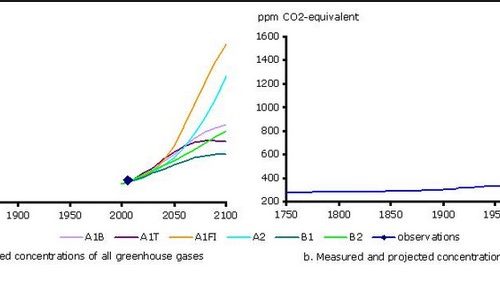
Glacier fluctuations result from changes in the mass balance of glaciers; if snow accumulation at the source outweighs glacier ablation, glacier thickening and the forward advance of the glacier snout occurs; conversely, if the rate of ablation exceeds snow accumulation, the glacier thins and recedes. Such glacial movements will always lag behind changes in climatic factors, and different glaciers have different response times to mass balance variations (Nye, 1965). Additional complexity in interpreting glacial movements in terms of climate change exists because there are many combinations of climatic conditions which might correspond to specific mass balance fluctuations. Temperature, precipitation (snowfall) and wind speed are three factors that need to be considered (Karlén, 1980).
A record of glacial front movements is generally derived from moraines (piles of sediments carried by advancing glaciers and deposited when they retreat). Periods of glacial recession, and the magnitude of recession, are naturally much harder to identify. Additionally, repeated glacial movements may destroy evidence from earlier advances, thus limiting the period open to palaeoclimatic reconstruction. Dating glacial movements is also prone to considerable error (Matthews, 1980). Radiocarbon dates on organic material in soils which have developed on moraines provide only a minimum age for glacial advance, since a considerable time lag may exist between moraine deposition and soil formation. Lichenometry (lichens) and tephrochronology (lava flows) may sometimes be used to assist the dating of glacial events (Porter, 1979), but again, the reliability is restricted.




Leave a Reply